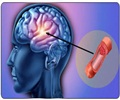Does estrogen exposure influence the risk of stroke over time?
- Estrogen exposure can reduce the risk of stroke in postmenopausal women
- Pregnancy and the use of oral contraceptives result in greater sustained blood estrogen levels //
- The main limitation of the study was that the data collected from the participants was based on their memory of events
Lifetime Cumulative Effect of Reproductive Factors on Stroke and Its Subtypes in Postmenopausal Chinese: A Prospective Cohort Study
Go to source). "Our study suggests that higher estrogen levels due to several reproductive factors, including a longer reproductive life span and using hormone therapy or contraceptives, are linked to a lower risk of ischemic stroke and intracerebral hemorrhage," said study author Peige Song, Ph.D., of the Zhejiang University School of Medicine in Hangzhou, China. "These findings might help with new ideas for stroke prevention, such as considering screenings for people who have a short lifetime exposure to estrogen."
The researchers looked at health insurance and disease registry data to see who had suffered a stroke. During a nine-year average follow-up period, 15,139 people experienced a stroke. There were 12,853 ischemic strokes, 2,580 intracerebral hemorrhages, and 269 subarachnoid hemorrhages between the brain and the membrane that covers it.
Participants were separated into four groups based on their reproductive life duration, which is the number of years between menstruation and menopause. Participants in the group with the shortest reproductive life duration had a reproductive life span of up to 31 years. Participants in the group with the longest reproductive longevity had 36 years or more of reproductive life.
Participants in the longer group experienced somewhat more strokes than those in the shortest group, 13.2% vs. 12.6%. However, after controlling for other characteristics that could influence stroke risks, such as age, smoking, physical activity, and high blood pressure, researchers discovered that participants in the longest group had a 5% decreased risk of all types of stroke. When compared to women with the lowest reproductive life duration, female participants with the greatest reproductive life span had a 5% reduced risk of ischemic stroke and a 13% lower risk of intracerebral hemorrhage.
Researchers also examined other factors influencing estrogen levels, such as the number of births and use of oral contraceptives, both of which are associated with higher levels, and the length of breastfeeding, which is associated with lower levels, based on the hypothesis that pregnancy and oral contraceptive use represent relatively higher sustained blood estrogen levels. They discovered that increased estrogen levels were associated with a decreased incidence of all types of stroke, including ischemic stroke and intracerebral hemorrhage.
Estrogen Exposure and Stroke
"Estrogen exposure throughout life could potentially be a useful indicator of a person’s risk of different types of stroke following menopause," said Song. "However, more research is needed on the biological, behavioral, and social factors that may contribute to the link between estrogen exposure and stroke risk across a woman’s lifespan."Reference:
- Lifetime Cumulative Effect of Reproductive Factors on Stroke and Its Subtypes in Postmenopausal Chinese: A Prospective Cohort Study - (https://pubmed.ncbi.nlm.nih.gov/36725338/)
















